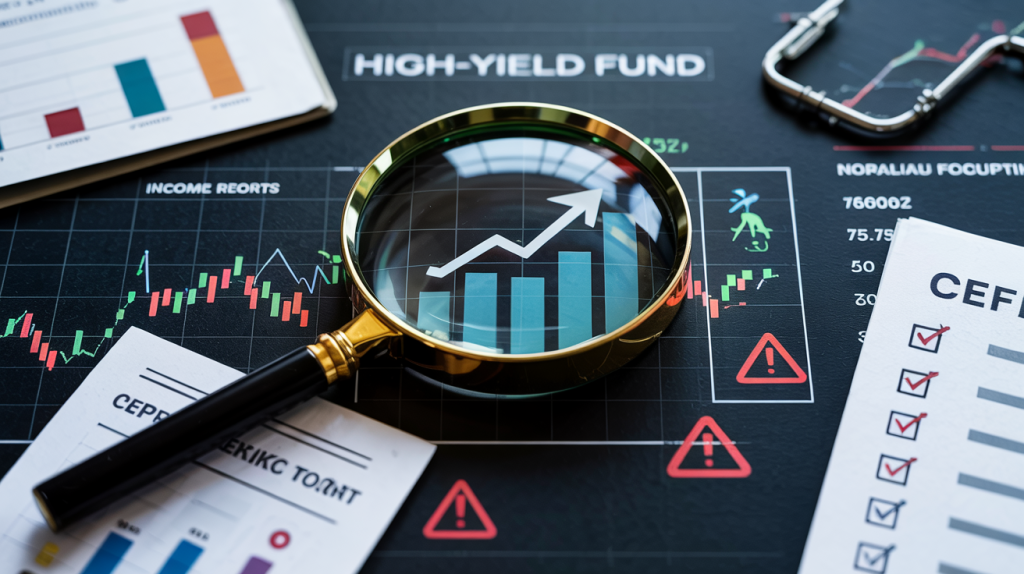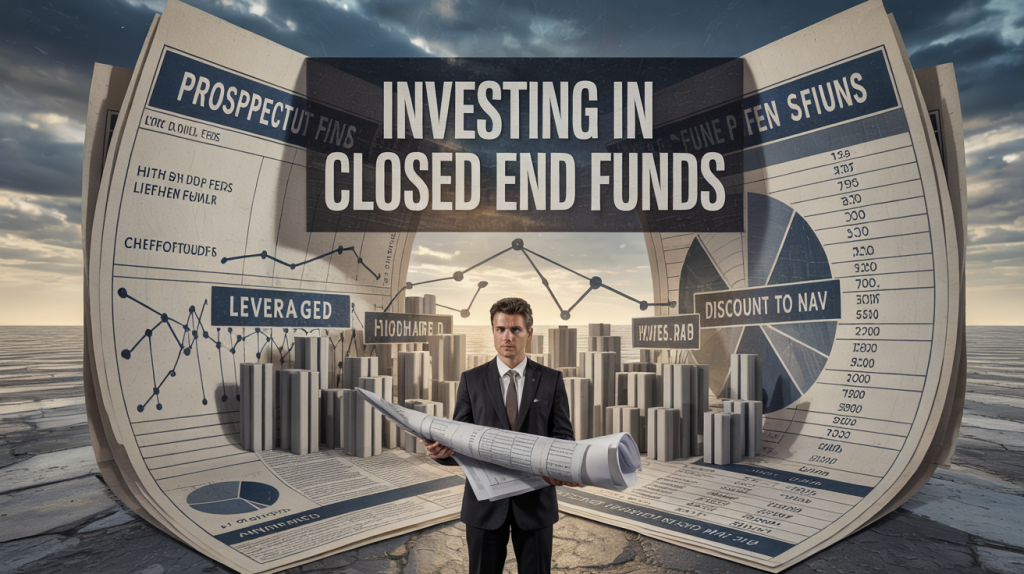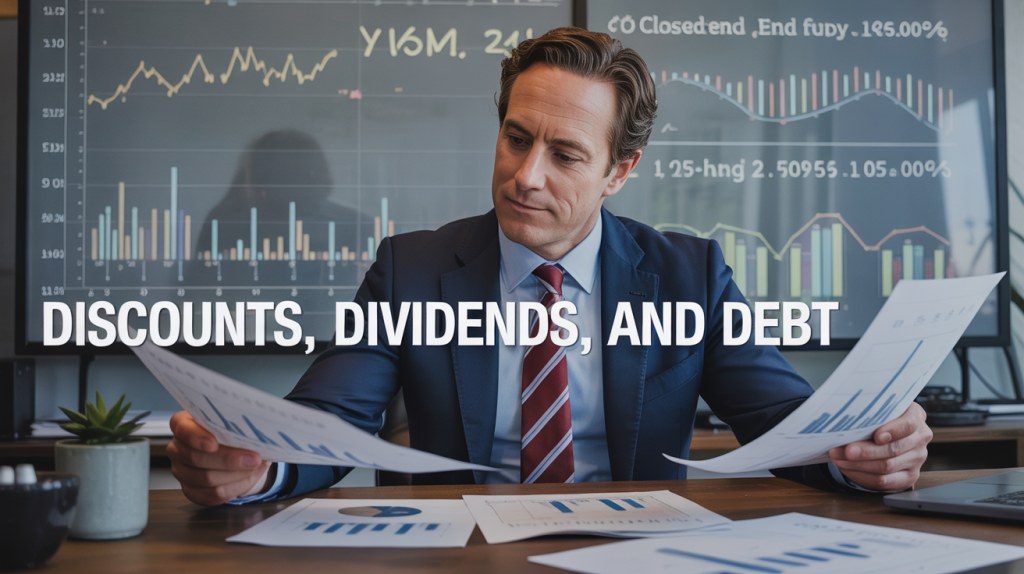
Closed end funds (CEFs) offer high yields that catch the eye, but the real story hides behind those numbers. If you rely only on the headline yield, you risk buying into a fund that’s eroding its own capital or masking poor performance with financial engineering. Professional portfolio managers dig deeper. They examine how the distribution is funded, assess undistributed net investment income (UNII), scrutinize leverage usage, and track portfolio turnover to understand tax and cost implications.
This article gives you a clear, practical framework to analyze closed-end funds with the same rigor professionals use, so you can separate income machines from landmines.
Don’t Chase Yield Blindly: Learn What’s Behind the Number
A high yield doesn’t always mean high income. In CEFs, the distribution can come from three sources: net investment income, realized capital gains, or return of capital (ROC). Only the first two are sustainable. ROC, while not inherently bad, can mean the fund is paying you with your own principal, potentially eroding net asset value over time.
You need to go beyond the quoted yield. Section 19a-1 notices and shareholder reports reveal the true composition of distributions. If a fund’s payout is mostly ROC, that eye-catching yield is suspect.
Once you understand the source of the payout, ask whether the fund is actually earning enough to sustain it.
UNII: The Canary in the Income Mine
Undistributed Net Investment Income, or UNII, is one of the clearest signals of a CEF’s income health. A positive UNII tells you the fund is generating more income than it pays out, an encouraging sign. A negative or deteriorating UNII suggests the fund is over-distributing and may be forced to cut its payout.
Many fund sponsors report three- and six-month UNII trends. Don’t just glance at the latest figure, pay attention to the direction. This is especially important for funds relying on fixed-income or dividend-paying securities. Without a UNII cushion, the payout walks a tightrope.
Of course, income is only part of the picture. You need to understand the risks the fund is taking to deliver it.
Leverage: Magnifying Returns and Risk
Most CEFs use leverage to enhance income. They borrow money or issue preferred shares to buy more assets than they could otherwise hold. This works well in bull markets and flat interest rate environments. But when asset prices fall or borrowing costs rise, leverage becomes a liability.
Funds with leverage over 30% deserve close inspection. Rising interest rates can squeeze net investment income, especially when leverage is floating-rate. In sharp selloffs, highly leveraged funds may be forced to liquidate holdings to meet regulatory or internal coverage ratios—often at the worst possible time.
Leverage isn’t necessarily bad, but it must be managed well. Look for funds that maintain or reduce leverage when conditions change, and review the manager’s commentary for signs of prudence and discipline.
Still, even income and leverage metrics are only as good as the portfolio that generates them.
What’s Inside the Portfolio? Follow the Assets
You’re not buying a ticker, you’re buying a portfolio. Understanding the underlying assets is essential. Is the fund loaded with high-yield bonds, MLPs, or emerging-market debt? Or is it holding more conservative instruments like municipal bonds or blue-chip dividend payers?
The sectors, credit quality, liquidity, and regional exposure all matter. A fund stuffed with junk-rated bonds might deliver big yields during good times but collapse in a credit crunch. A portfolio with illiquid or obscure assets may hold up in a calm market, but face serious issues if liquidity dries up.
Don’t rely on fund marketing. Go to the fund’s fact sheet or annual report and study its holdings. Look for thoughtful diversification, not just a collection of random positions.
With the portfolio understood, there’s one more silent performance drag you can’t afford to miss.
Portfolio Turnover: Quiet Costs That Add Up
High turnover often signals hidden costs. It leads to trading expenses and tax consequences that erode your returns even if the yield looks fine on paper. It can also suggest the manager is chasing performance or dressing up the portfolio for marketing purposes.
Turnover should match the fund’s strategy. If a fund claims to be long-term income focused but turns over 100% of its portfolio each year, something isn’t adding up. Conversely, if a fund operates in a volatile sector and never trades, that could signal neglect.
As always, context is key. Evaluate turnover in light of the strategy and market conditions.
The Pro’s Checklist for Analyzing Closed End Funds
Before you invest in any CEF, make sure it checks all these boxes:
- Distribution source: Majority from net investment income, not ROC.
- UNII trend: Positive and stable or improving.
- Leverage: Moderate and prudently managed.
- Portfolio: High-quality, well-diversified holdings.
- Turnover: Low unless clearly justified by strategy.
If a fund fails two or more of these, you’re likely looking at a trap—not an opportunity.
Final Thoughts: Build Income Intelligently
Closed end funds can be powerful tools for income, but they’re often misunderstood. Investors drawn to the yield need to bring the same level of scrutiny a portfolio manager would. Understand what’s funding the payout, whether that payout is sustainable, and what risks are involved in generating it.
The work is worth it. Our Income Factory strategy follows these very principles to find funds with strong, resilient income potential designed to grow and compound over time.
Closed end fund data: CEFConnect

Shailesh Kumar, MBA is the founder of Astute Investor’s Calculus, where he shares high-conviction small-cap value ideas, stock reports, and investing strategies.
His work has been featured in the New York Times and profiled on Wikipedia. He previously ran Value Stock Guide, one of the earliest value investing platforms online.
Subscribe to the Inner Circle to access premium stock reports and strategy insights.
Featured in:



